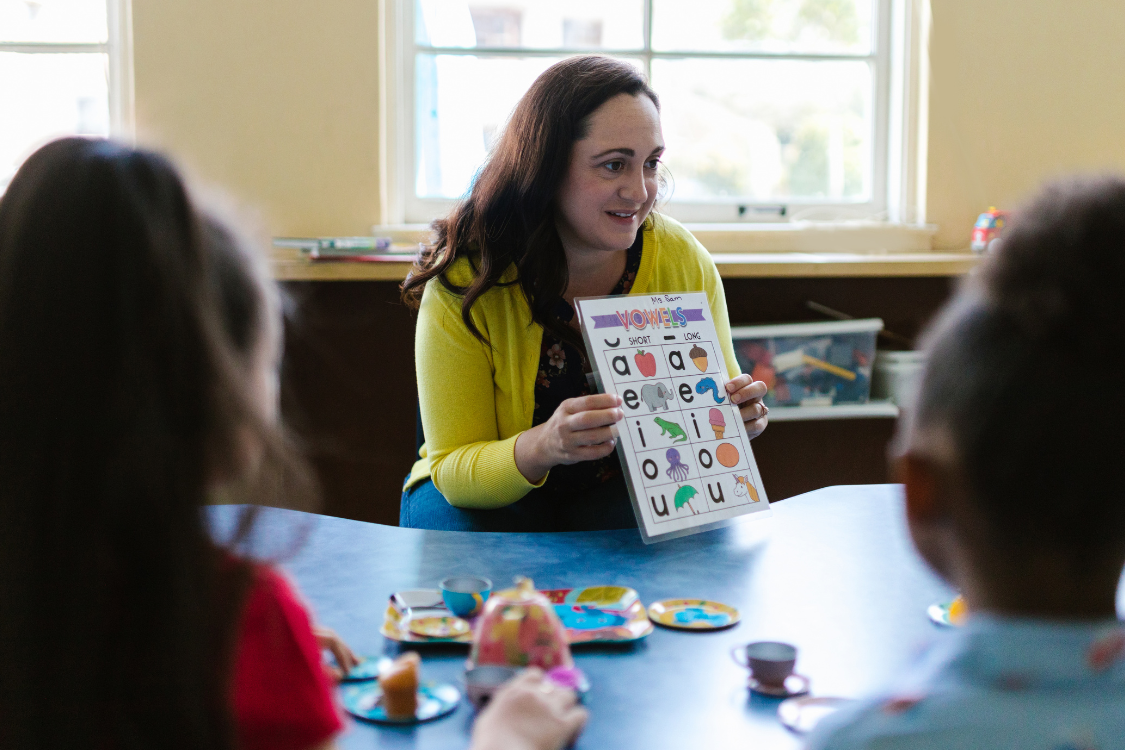Phonics Training Events and Conferences in 2026: Your Complete Guide
2026 brings an exceptional lineup of professional learning opportunities for educators committed to evidence-based phonics instruction. Whether you’re a classroom teacher seeking to refine your skills, a reading specialist supporting struggling students, or an administrator leading literacy initiatives, these conferences offer targeted training in explicit, systematic phonics methods that research proves effective.
Major Multi-Day Conferences: Deep Dives into Literacy Instruction
Here are some of the literacy-focused events for 2026.
Plain Talk About Literacy and Learning 2026
New Orleans welcomes literacy educators March 11-13, 2026, for one of the field’s most established professional learning institutes. This conference explicitly lists “Phonics” and “Phonological Awareness” among its core topic strands, ensuring dedicated sessions for word-study instruction.
Registration Details: Early bird pricing (on or before November 7, 2025) is $699, increasing to $799 through February 6, 2026, and $899 thereafter. Registration is available through MyCLL.
Phonics Focus: The conference structure includes dedicated tracks for phonics instruction, allowing participants to build a comprehensive understanding across multiple sessions. Attendees can expect practical workshops on scope and sequence, assessment-driven instruction, and the implementation of systematic phonics programs. The multi-day format provides opportunities to engage deeply with phonics pedagogy, moving beyond surface-level overview to actionable classroom strategies.
What sets this conference apart is its practical orientation—sessions balance research foundations with ready-to-implement teaching techniques. Educators leave with actual lesson plans, assessment tools, and instructional routines they can use immediately with their students.
Literacy Reimagined Conference 2026
The Reading League’s Alabama chapter hosts this remarkable two-day event March 5-6, 2026, at the Daphne Civic Center in Daphne, Alabama. The conference theme, “Turning Pages: Reimagining Literacy Instruction,” signals a commitment to evidence-aligned practices.
Registration Details: Tickets available through The Reading League Alabama chapter. Pricing details are being finalized.
Phonics Focus: The keynote lineup alone makes this conference essential for phonics educators. Dr. Anita Archer, renowned for her work on explicit instruction, and Dr. Louisa Moats, whose research on structured literacy and phonics has shaped modern reading instruction, will present. Dr. Moats’ expertise in word study and the structure of English makes her sessions particularly valuable for teachers seeking to deepen their understanding of phonics principles.
This conference represents The Reading League’s mission to advance the Science of Reading. Attendees can expect sessions grounded in research evidence, with clear connections between brain science and classroom practice. The structured literacy emphasis ensures that phonics instruction is presented within the comprehensive framework students need for reading success.
TRLSummit 2026
The Reading League’s flagship conference returns to Syracuse, New York, May 5-6, 2026, with a focus on “From Confusion to Clarity: Turning Data Into Instructional Impact.”
Registration Details: Registration is open through The Reading League. Check their website for current pricing.
Phonics Focus: While the theme emphasizes assessment and data use, the conference’s foundation in Science of Reading principles ensures strong phonics content. Keynote speaker Dr. Christopher Schatschneider, a leading researcher in reading and assessment, brings expertise in understanding how phonics skills develop and in measuring that development effectively.
The data-focused theme is particularly relevant for phonics instruction. Teachers need to understand not just what to teach but how to assess whether students are mastering letter-sound correspondences, blending skills, and decoding abilities. Sessions will address using assessment data to inform phonics instruction, identifying students who need intervention, and monitoring progress in systematic ways.
This conference attracts educators serious about implementing evidence-based practices. The networking opportunities allow teachers to connect with colleagues facing similar challenges and discover solutions grounded in research rather than trends.
Focused Training Events: Intensive Skill Development
Here are some smaller but more intensive events.
Science of Reading Mini Con 2026
Racine, Wisconsin, hosts this focused one-day event on June 25, 2026, specifically designed for K-5 educators implementing Science of Reading principles.
Registration Details: Registrations are opening soon through Science of Reading 101 Club. Pricing to be announced.
Phonics Focus: The conference description talks about “phonics/word-study,” recognizing that while learning from researchers is important, teachers need practical, classroom-ready strategies. As a Science of Reading-aligned event, phonics instruction sits at the core of the programming.
The mini-conference format allows for intensive, focused training without the overwhelm of massive multi-track conferences. Expect hands-on workshops where teachers practice phonics routines, examine instructional materials, and develop lesson sequences they can implement immediately. The K-5 focus ensures content is developmentally appropriate and grade-specific.
What makes this event particularly valuable is its emphasis on teacher support. The organizers understand that implementing systematic phonics instruction represents a significant shift for many educators, and the conference structure provides the practical tools and encouragement teachers need to make that shift successfully.
PaTTAN Literacy Symposium 2026
This virtual conference, scheduled for June 16-18, 2026, brings structured literacy training directly to educators across Pennsylvania and beyond.
Registration Details: Registration opens early April 2026 through PaTTAN. Pricing information forthcoming.
Phonics Focus: The symposium features powerhouse keynote presenters Holly Lane and Anita Archer, both recognized experts in phonics and structured literacy instruction. Their presentations provide a research foundation while maintaining a strong focus on practical implementation.
The conference spans early literacy through high school, recognizing that phonics instruction doesn’t end in primary grades. Older struggling readers often need systematic phonics intervention, and teachers working with these students need specialized training in accelerated phonics instruction and remediation strategies.
The virtual format removes barriers of travel and time, making high-quality professional development accessible to teachers who might not otherwise access this level of training. Three full days of programming allow for comprehensive coverage of phonics principles, assessment, intervention, and differentiation.
Virtual and Hybrid Options: Accessible Professional Learning
Want to tune in remotely? Here are some training options.
LitCon ’26
The Literacy Council of North America presents this virtual conference on February 3, 2026, featuring one day of live sessions plus 28 days of on-demand access.
Registration Details: Early bird pricing (July 1–November 14, 2025): Members $380, Non-Members $480. Regular pricing (November 15–January 30, 2026): Members $480, Non-Members $580. Register at Literacy Conference.
Phonics Focus: The call for proposals explicitly lists “Phonics/Phonemic Awareness” as a conference strand, ensuring dedicated sessions on these foundational skills. Programming spans Pre-K through elementary classroom literacy, with specialized tracks for different grade bands.
The extended on-demand access is a significant advantage—teachers can revisit sessions, share content with colleagues, and implement strategies at their own pace. This model acknowledges teachers’ busy schedules while providing comprehensive professional learning.
Conference strands include both foundational phonics instruction and leadership topics, making it valuable for teachers, coaches, and administrators. The virtual format facilitates broader participation, allowing entire school teams to access the same high-quality training and develop a shared understanding of effective phonics instruction.
Regional Opportunities: Localized Training and Networking
Depending on where you’re located, these local or regional trainings may be a good fit.
Comprehensive Literacy Conference 2026
National Louis University’s Reading Recovery Center hosts this K-8 focused conference in Chicago, January 14-16, 2026.
Registration Details: Registration information will be available soon at National Louis University.
Phonics Focus: Designed specifically for K-8 teachers and literacy coaches, the conference addresses early literacy acquisition, intervention, and comprehensive literacy development. While phonics and word study are implied rather than explicitly highlighted, the focus on early literacy acquisition necessarily includes systematic phonics instruction.
The three-day format allows for progressive learning—foundational sessions establish a research basis, followed by practical application workshops and specialized intervention strategies. The conference serves as excellent professional development for teachers transitioning to more structured, explicit phonics approaches.
Chicago’s central location and the university’s reputation for literacy education attract educators from throughout the Midwest, creating valuable networking opportunities with colleagues facing similar implementation challenges and celebrating similar successes.
MTSU Literacy Research Conference 2026
Middle Tennessee State University in Murfreesboro hosts this accessible conference on February 21, 2026, offering both in-person and virtual attendance options.
Registration Details: $60 registration fee (October 31, 2025–January 31, 2026) covers either in-person or virtual attendance. Register through MTSU.
Phonics Focus: The keynote speaker, Dr. Louisa Moats, brings unparalleled expertise in word study and phonics instruction. Her research has fundamentally shaped educators’ understanding and teaching of phonics, making her presentation essential for anyone serious about evidence-based reading instruction.
Dr. Moats’s work emphasizes the linguistic foundations teachers need to teach phonics effectively. Her sessions typically address the structure of English, why certain phonics patterns exist, and how to teach them systematically. This depth of understanding transforms teachers from following scripts to making informed instructional decisions.
The conference explicitly lists “Primary phonics instruction” among its topics, ensuring dedicated sessions on teaching letter-sound correspondences, blending, segmenting, and decoding strategies. The single-day format and modest registration fee make this conference particularly accessible for teachers paying their own professional development costs or districts with limited budgets.
Make the Most of Your Conference Experience
Attending a literacy conference is a significant time and resource investment, but strategic planning maximizes the return on that investment. Before registering, identify your specific learning goals. Are you new to systematic phonics instruction and need a foundational understanding? Are you experienced but seeking advanced intervention strategies? Do you need to lead implementation in your building and require leadership-focused sessions?
Once you’ve clarified your goals, review conference programs carefully. Most conferences publish session descriptions weeks before the event—use these to plan your schedule, prioritizing sessions aligned with your needs. Don’t try to attend everything; allow time to process learning and network with colleagues.
During the conference, take notes focused on immediate application. Rather than trying to capture everything speakers say, identify three to five specific strategies or concepts you’ll implement within the first month after returning. Connect with presenters and fellow attendees—these relationships often prove as valuable as the formal sessions.
After the conference, share the learning with colleagues. Present key takeaways at team meetings, start a book study group around concepts introduced, or volunteer to lead professional development sessions for your building. Teaching others solidifies your own learning and spreads the impact of your conference attendance throughout your school community.
Strengthen Your Practice, Transform Your Students’ Lives
The path to reading proficiency begins with effective phonics instruction, and effective phonics instruction begins with well-trained teachers. The 2026 conferences listed here represent the best opportunities to build that expertise through direct learning from leading researchers and practitioners in literacy education.
Every student deserves a teacher equipped to provide systematic, explicit phonics instruction, as research shows to be effective. These conferences offer the training, tools, and community support educators need to become that teacher. The investment you make in professional learning multiplies across every student you teach, creating readers who can access the full richness of written language.
For more evidence-based strategies, phonics program reviews, and practical resources for supporting early readers, visit Phonics.org, where we provide ongoing guidance for educators committed to literacy excellence.










